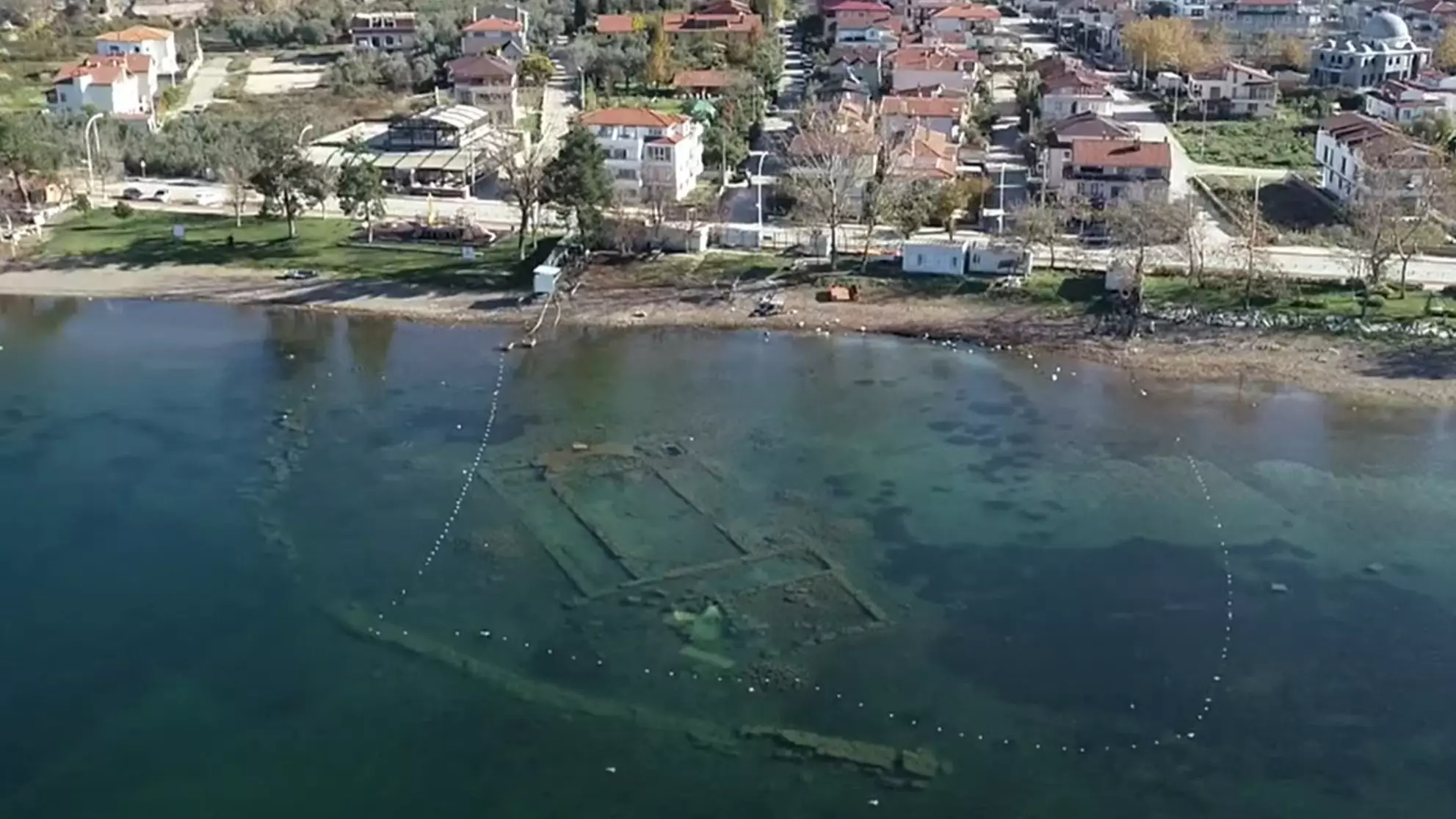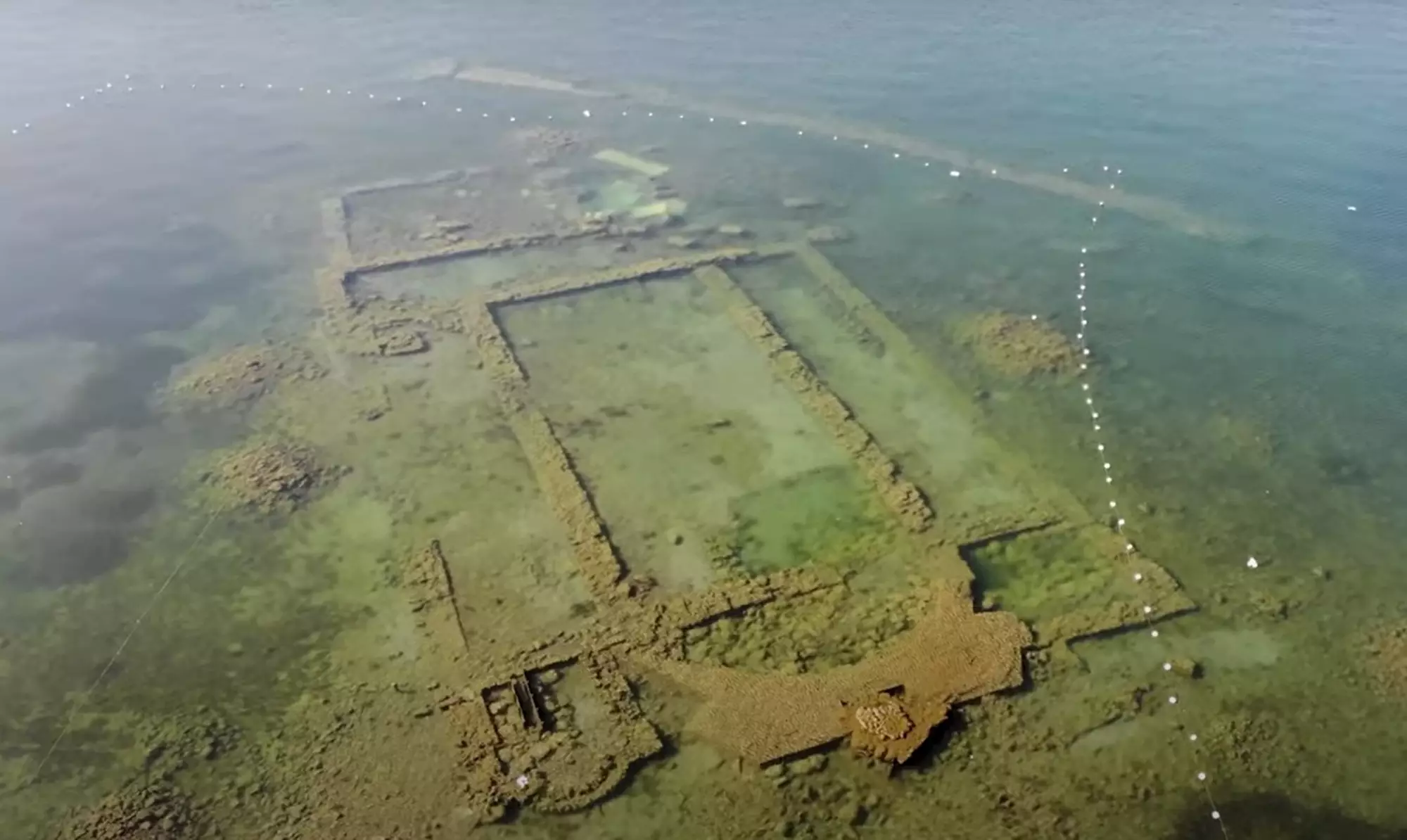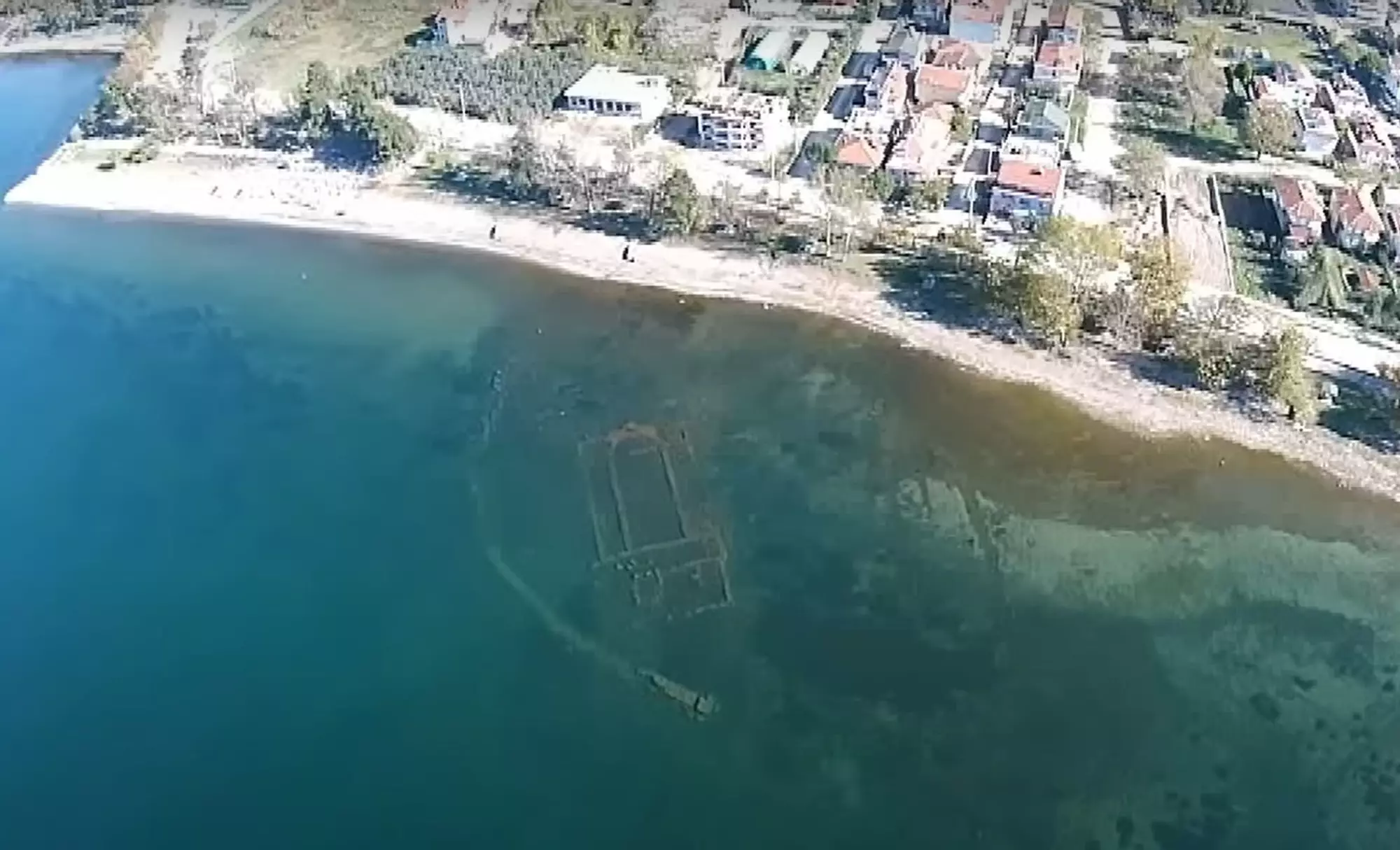
The ruins of a 1,600-year-old church were made visible for the first time in years thanks to lockdown.
Although it was tough for just about everyone, the huge lockdowns in countries across the world were a massive boost for the environment, with air and waters becoming clearer due to less pollution.

Advert
In Lake Iznik in north-west Turkey the waters cleared up so much that the remains of the ancient Byzantine-era Basilica of Saint Neophytos could be seen submerged metres below.
The ruins, which were first discovered in 2014, are usually completely covered in algae and impossible to see, but stunning photos taken last June show the waters looking crystal clear and offering an incredible view of the ancient building.
At the time of the find, the Archaeological Institute of America named the Basilica as one of the top 10 discoveries of the year.
Historians believe that the church was built in AD 390 in honour of St. Neophytos, a Christian saint martyred in AD 303.
Advert
Speaking back in 2015, the Head of Archaeology Department at Uludag University, Professor Mustafa Sahin, said: "We think that the church was built in the 4th century or a later date.
"It is interesting that we have engravings from the Middle Ages depicting this killing. We see Neophytos being killed on the lake coast."
However, it's understood the church collapsed during an earthquake around AD 740, causing it to sink into the lake.

Advert
Prof Sahin told Live Science that he was surprised about the find as he had been carrying out research in Iznik for years and had never come across it.
He said: "I hadn't discovered such a magnificent structure like that.
"When I first saw the images of the lake, I was quite surprised to see a church structure that clearly."
He echoed these sentiments in an interview with the Archaeological Institute of America, adding: "I did not believe my eyes when I saw it under the helicopter.
Advert

"I thought to myself, 'How did nobody notice these ruins before?'"
Prof Sahin also speculated that there might be more than meets the eye with the historic find - in the form of a pagan temple.
Documents relating to the area show a link between the Roman emperor Commodus and a temple matching the one in Iznik which, at the the time, was known as Nicea.
Advert
Discussing these claims, the professor posed the question: "Could this temple have been underneath the basilica remains?"
Featured Image Credit: CENTopics: World News, Interesting